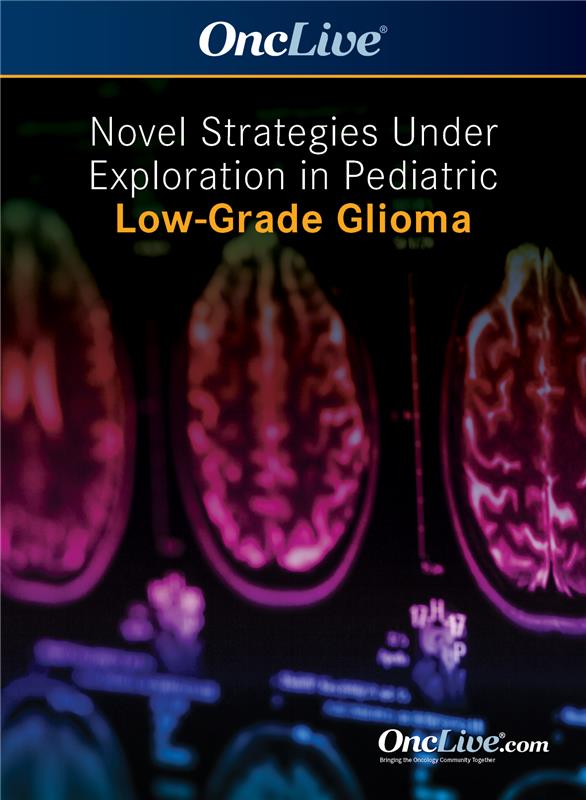Phase 2 Data Indicate Role of Tovorafenib in Pediatric Low-Grade Glioma
Sarah E. S. Leary, MD, MS, spotlights the importance of developing effective treatments for pediatric patients with low-grade glioma, key findings with tovorafenib in patients with RAF mutations, and how this agent may influence the low-grade glioma therapeutic landscape going forward.
Sarah E. S. Leary, MD, MS

The pan-RAF inhibitor tovorafenib (DAY101) has generated responses in pediatric patients with low-grade glioma, and data from the phase 2 FIREFLY-1 trial (NCT04775485) support the continued evaluation of this agent as a potential therapeutic option for the most common tumor in pediatric patients, according to Sarah E. S. Leary, MD, MS.
FIREFLY-1 is evaluating the efficacy and safety of tovorafenib in patients aged 6 months to 25 years with RAF-altered low-grade glioma and other solid tumors. In the cohort of patients with BRAF-mutated low-grade glioma (n = 69), the agent elicited an overall response rate of 67%, including a 6% complete response (CR) rate and a 61% partial response (PR) rate. In addition, 26% of patients had stable disease (SD) and 6% of patients had progressive disease (PD).1
The initiation of FIREFLY-1 was supported by preliminary findings from the phase 1b PNOC014 trial (NCT03429803), which investigated tovorafenib in pediatric patients with relapsed low-grade glioma harboring RAF alterations. In this trial, among 8 patients who received tovorafenib, 2, 3, 2, and 1 achieved best responses of CR, PR, SD, and PD, respectively.2 Furthermore, in July 2021, tovorafenib was granted rare pediatric disease designation by the FDA for patients aged 18 years and younger with RAF-altered low-grade glioma.
“I hope trials like this and potentially data from other planned trials will lead to standard therapies that are safe and effective for this diagnosis in pediatric patients,” Leary said in an interview with OncLive® following the 2023 SNO Pediatric Conference.
In the interview, Leary spotlighted the importance of developing effective treatments for pediatric patients with low-grade glioma, key findings with tovorafenib in patients with RAF mutations, and how this agent may influence the low-grade glioma therapeutic landscape going forward.
Leary is an attending physician, the medical director of the Pediatric Brain Tumor Program, and the medical director of Clinical Research at the Ben Towne Center for Childhood Cancer Research at Seattle Children’s Hospital in Washington, as well as a professor in the Department of Pediatrics at the University of Washington School of Medicine.
OncLive: What unmet needs exist for pediatric patients with low-grade glioma?
Leary: Low-grade gliomas are [examples of] tumors that teach us [to] first do no harm. They are considered benign tumors, and if removed safely, that’s often the only treatment they need. However, they can occur in important areas of the brain in developing children. They’re the most common tumor that occur in children, and if they occur in central areas like the optic pathway or other midline structures, they can’t be safely removed surgically. There’s a huge need for appropriate medical therapy that doesn’t harm the child as they develop.
Children with low-grade glioma may be on and off medical therapies for years, because although radiation would be effective, we want to completely avoid radiation if we can, because that is also detrimental to the developing brain. We expect children with low-grade gliomas to survive, and our goal [is to provide a] treatment so they can continue to live their lives both during and after treatment without either short- or long-term harm.
There is a tremendous unmet need because of how common these tumors are. Additionally, they’re unique to pediatrics. They are not [tumors that the] field outside of pediatric neuro-oncology spends much time thinking about.
What is the mechanism of action of tovorafenib, and what was the rationale for investigating this agent in pediatric patients with low-grade glioma?
There’s been a recent revolution in targeted therapy or kinase inhibitor therapy for pediatric low-grade gliomas. Pediatric neuro-oncology is an incredibly collaborative community. Over the past several decades, we sought to combine data from rare tumors and apply tools from the Genome Project, such as sequencing, to understand the biology of these tumors.
Low-grade gliomas, particularly pilocytic astrocytomas, are driven by BRAF pathway alterations. The BRAF gene is involved, and that was described in those large genomic studies. Because there are now kinase inhibitors that can hit that pathway, our community was interested in studying those.
The first big advances were with first-generation BRAF inhibitors, which interestingly work if patients have a BRAF mutation, but not [if they have] a translocation. Targeted therapy gets specific. That was only discovered in clinical trials. The next group of drugs that was interesting and revolutionized therapy were MEK inhibitors. Those also inhibit the BRAF pathway but further down.
The third group of drugs in this category, tovorafenib is the first one [that we’re investigating]. It was initially [described as] a second-generation BRAF inhibitor, but it’s more appropriately considered a pan-RAF inhibitor. That drug appears to affect the pathway regardless of what type of mutation a patient has, so it has an advantage over some of the previous BRAF- and MEK-specific inhibitors from a biologic sense.
That’s what we’ve seen in early-phase clinical trials. Many of the children that were on the phase 1 trial and now the phase 2 FIREFLY-1 trial have already had other pathway inhibitors. They’ve all had prior therapy and had tumors growing after that. We see an excellent response rate with this next-generation drug. It’s provided much interest because of the biologic rationale and what we’re seeing in the clinical trials.
What was previously seen with tovorafenib in the PNOC014 trial?
We had that trial open [at Seattle Children’s Hospital], and a couple of my own patients have benefited from it. This initial phase 1 trial [aimed] to establish dosing in children, which it did. Additionally, the response rate was good—much higher than what we often see in phase 1 studies.
My patients on that trial were children who had received multiple prior therapies, including therapies with other targeted kinase inhibitors. Both of my patients did well on that study, completing the entire planned course of therapy without any tumor progression. On the study as a whole, the data that have been released [seem to confirm that experience] across the board.
We still want to understand more about who responds and how patients respond. The phase 2 study is further investigating response. We’re all excited about seeing those data start to come out, [although they are] not finalized yet.
What patient populations did FIREFLY-1 enroll?
The trial is open to several different populations. There’s an arm for patients with tumors outside the central nervous system. However, the largest arm, which is driving the trial and our interest in the field, is the [BRAF-altered] low-grade glioma arm. That’s the group [in which] we’re specifically interested in efficacy [and the group for which] we have seen data so far. The preliminary efficacy data released from that trial look good, similar to what was seen in the initial few patients from the phase 1 study.
What efficacy and safety trends have been noted in FIREFLY-1 so far?
We are reporting the [efficacy data] so we can compare them to other published information in the future. To date, our overall impression is that we haven’t seen any new safety signals other than the adverse effects we already knew about with this category of agents. We’re encouraged that the efficacy seems at least the same as or maybe better [than the findings from PNOC014]. We’re seeing responses in patients who had progressed on other therapies, so that’s exciting.
What are the potential future implications of the FIREFLY-1 findings?
My hope is that the trial’s sponsor, Day One Biopharmaceuticals, takes this information to the FDA. We do not have any FDA-approved drugs for this, the most common tumor in pediatric patients. [Tovorafenib] could be one of the first agents that would be applicable to most patients with this diagnosis, if approved.
One of the unique aspects of this company is that it’s run with experts in our field. That’s unusual. In most companies, even medical [professionals] are not necessarily experts in pediatric brain tumors. It’s exciting for us as a community to see a company partner with us [and have] their main goal and first step to be investigating treatments for pediatric brain tumors. That’s unique in my experience.
What other influential presentations came out of the 2023 SNO Pediatric Conference?
One of the areas that was exciting and influential was the section on immune therapy, another big area in our field. There was an entire section focused on cellular therapy where all the centers from around the United States and around the world that are working on CAR T-cell therapy for pediatric brain tumors presented together. It was a great forum to compare, contrast, and share information about what we’re seeing.
All those studies are in early phases, so we’re trying to understand the safety, and the efficacy [data are] preliminary. However, this is a completely new approach to treating pediatric brain cancers, and there’s much excitement around that. It was nice to see. This was probably the largest number of presentations [on that topic] with patient data that has ever been presented in one place.
References
- Kilburn L, Khuong-Quang D, Nysom K, et al. Clinical activity of pan-RAF inhibitor tovorafenib in the registrational pediatric low-grade glioma arm of the phase 2 FIREFLY-1 (PNOC026) study. Presented at: 2023 SNO Pediatric Conference. June 22-24, 2023. LGG-09.
- Day One receives FDA Rare Pediatric Disease designation for DAY101 for the treatment of pediatric low-grade glioma. News release. One Biopharmaceuticals. July 27, 2021. Accessed July 26, 2023. https://ir.dayonebio.com/news-releases/news-release-details/day-one-receives-fda-rare-pediatric-disease-designation-day101




